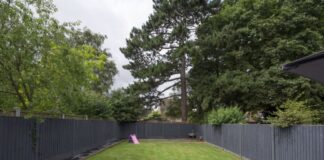An old house has charm, character, and can often offer more space than a modern build. However, the obvious downside to more space and the age of the house is heating or cooling costs. Modern homes can be very similar to each other, or you can view them as a blank canvas. But, whichever you do you can be assured that they have the latest insulation and smart technology.
Unfortunately, the same cannot normally be said about older homes. They simply pre-date the technology. However, the good news is that you can have an older home and still have energy efficiency that rivals new houses. You just need to follow these steps
Find the Leaks
In order to decrease heat leakage, you need to know where it’s leaking from. To do this you’ll need to use a good thermal imaging services firm near you. They’ll survey your entire house with specialist equipment to locate the spots that are leaking, allowing you to create a list of items to be replaced/repaired.
You may be surprised at where you’re losing heat.
Change Windows & Doors
It probably won’t be surprising that windows and doors are the worst culprits when it comes to heat loss. Badly fitted, or old, windows and doors will have gaps around them, allowing cold air in and hot air out. You may also find that the windows and doors are not double-glazed, resulting in significant heat loss.
The sooner you change them the better.
Add Insulation
Insulation has come a long way since your home was built. It doesn’t matter if it currently has no insulation, as long as there is a gap between the walls, or you have separate internal walls, you’ll be able to have insulation pumped into them.
Insulating your house properly, with professional help, will make a dramatic difference to your energy bills. You can hire professionals in spray foam insulation Ohio to help in your house insulation.
Of course, you should make sure the roof is also insulated as most of the heat in your home is lost this way.
Replace Light bulbs
You probably already know that modern light bulbs are much more energy-efficient than the older ones. It’s time to change the light fittings in your home to ensure they all use LED lights or other low-energy bulbs.
It is a good idea to get professional help with this as electricity can be very dangerous.
Fit New Water Appliances
You should also look at replacing your water appliances, that means all faucets, dishwashers, and washing machines. Modern ones will be more energy-efficient and you can even include a pressure regulator in your new water system to ensure that the pressure is reduced, which will lower the strain on your appliances and decrease water usage.
If you need convincing consider the fact that pre-1980 cisterns use 7 gallons of water per flush, modern ones use just 1-2 gallons. That’s a huge saving on your energy bill over the year!




















